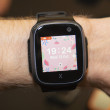Review: BlackBerry KEY2
Jun 27, 2018, 8:00 AM by Eric M. Zeman
updated Jun 27, 2018, 8:01 AM
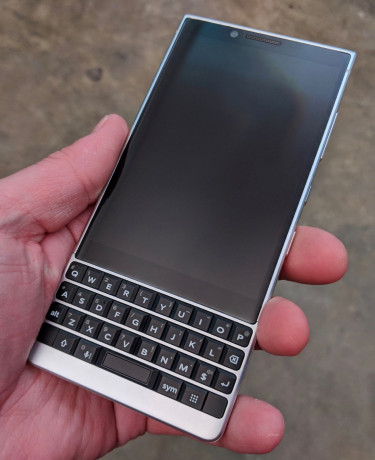
The BlackBerry KEY2 takes the basic design of last year's phone and makes improvements all around. The phone has a decent-sized screen, physical QWERTY keyboard, and metal chassis. It runs Android Oreo with BlackBerry's business software on board. Combine all this with a snappy processor and a big battery and you have a potential winner. Is anything holding this phone back? We find out in our in-depth review.
Is It Your Type?
TCL is back with a refreshed version of its keyboard-equipped BlackBerry. If you long for the tactile feel of real buttons and appreciate hardened security, the KEY2 — with its full QWERTY keyboard and robust encryption — is just about the only option in the market.
Body
The KEY2 is a follow-up to last year's KEYone, and demonstrates that listening to your customers can reap dividends. The phone is better in nearly every way than its predecessor.
The KEY2 carries over the basic principles of the the first. It's a large slab with a metal frame, mid-sized screen, and physical keyboard. The KEY2 upgrades to 7000 series aluminum for the frame, with a matte finish. I particularly like the new shape. You'll find squared off corners at the top of the phone, but rounded ones at the bottom. The side edges are now cut with angled chamfers that look classy. The 2.5D glass on front is curved where it meets the edges. The material and pattern that make up the rear panel are improved, too. The KEY2 comes in two colors: silver and matte black. Both are sharp, though I'm partial to the black one.
The phone stands under six inches tall and sits less than three inches wide. TCL claims the phone is 1mm thinner and 20 grams lighter than the outgoing model. These may sound like minor improvements, but they truly add up. The slimmer, lighter device is much more appealing to me. I was turned off by the blockier, bulkier footprint of the original. The sequel is simply a better, more usable piece of hardware. It's easy to hold, easier to use, and easier to tote around. It fits in pockets pretty well.
I would call the KEY2 more cohesive than the original, and that's evident when examining the materials and the way they're assembled. The aluminum frame is strong and the various components — display, keyboard, rear panel — are set into it snugly. There are no unsightly gaps in any of the seams.
TCL says this BlackBerry is rugged(ish). It's not tough-as-nails rugged, but it is able to handle some rough treatment. The polycarbonate rear panel, for example, isn't going to break when the phone is dropped. I'm not happy about the phone's lack of waterproofing. It can handle sweaty phone calls, some light splashing, and a spritz of rain, but no submersion into pools or other bodies of water.
TCL gave the KEY2 a literal facelift. The company reduced the size of the forehead and lifted the display upward. This gives the KEY2 more room for the keyboard, which TCL made 20% taller than last year's phone. TCL did this because owners of the original KEYone complained that the keyboard was too small. Problem solved.
The larger keyboard has bigger, angled buttons that adopt a matte finish. The keyboard boasts improved travel and feedback, and is much punchier than that of the original. The roomier layout makes for easier and more accurate typing. The keyboard drops the silver "frets" between the rows on last year's keyboard, replacing them with a small space that helps set the rows apart and keep your thumbs on point. Again, these small improvements really add up. However, the spacebar is very clicky and loud, which is a shame.
As before, the keyboard acts as a touch trackpad. You can swipe your thumb around the keyboard to move the cursor or navigate through home screen panels, apps, and web pages. This is really helpful. The fingerprint reader is embedded in the spacebar, which makes lots of sense. TCL eliminated the right "shift" button and replaced it with the Speed Key, a dedicated action button that can be used to trigger user-defined shortcuts.
Keyboard
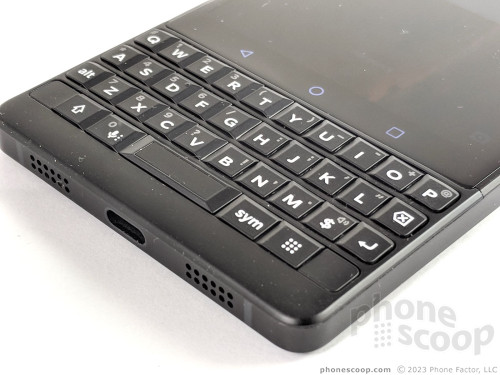
The dollar sign ($) is the only symbol to have its own dedicated key. BlackBerry calls it the currency key. In addition to typing the $ symbol, it can act as a hot key to one of five other actions if you prefer. I wish there were an "@" or "." or "#" — all of which are relied upon heavily in today's social media apps. There isn't a shortcut to emoji, either. You have to press the "sym" key to open the keyboard for symbols and other non-traditional characters, which appear on the screen. It's clunky and I don't like how symbols are arranged. Consider this part of the cost to gain that physical keyboard.
Also oddly, TCL kept the capacitive back, home, and multitasking keys above the keyboard and under the display. I can't grasp this waste of physical real estate for buttons that could have been placed on the screen as needed; TCL could have given this BlackBerry a bigger screen.
A fairly typical series of buttons and ports populate the outer edge. There are three physical buttons on the right edge: the volume toggle, the screen lock button, and the user-definable action key. These keys are painted black but have polished edges so they stand out visually. All three have good travel and feedback. I like the profile of the screen lock key, which is ridged to help differentiate it from the other two.
You'll note a USB-C port on the bottom, along with drilled speaker holes. A 3.5mm headphone jack is on top. The SIM / memory card tray is on the left edge. The tray supports either one SIM card and one memory card, or two SIM cards.
The polycarbonate material that forms the rear panel is curved just a bit where it meets the side edges. TCL said it upgraded the pattern for a better in-hand feel and I think the company succeeded. The micro-diamond-shaped pattern is comfortable against your skin and provides a bit of grip at the same time. There's no removing the rear panel, nor the battery underneath. The dual camera module is raised a bit. It's accompanied by a two-tone LED flash.
Cameras
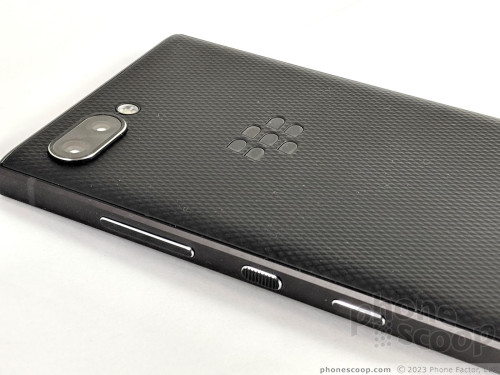
The thinner profile and improved keyboard impress me. TCL introduced just the right number of refinements compared to the original to ensure that it's a better BlackBerry overall.
Screen
Compared to other phones, you're obviously sacrificing screen size to make room for the keyboard.
Face
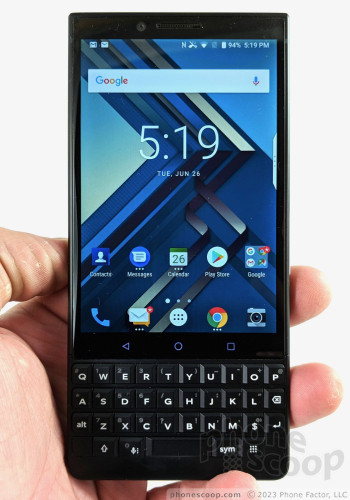
The display is a carry-over from the original as far as specs are concerned. It has the same 4.5-inch measurement in a 3:2 aspect ratio with 1,080 by 1,610 pixels. The resolution is fine. It has the same number of pixels side-to-side as many competing devices. Everything on the screen looked sharp and clean. I do wish it had better color. Tones appear a bit muted to my eyes on this screen and whites have a slight blue cast. The display puts out enough light for use most places, including outdoors under bright light. I like the 2.5D curved glass, which bends slightly along the edges.
TCL's software allows you to tweak the color profile, set night/reading mode, control system font/icon sizes, and more.
Signal
The BlackBerry KEY2 has excellent support for U.S. LTE networks. With the exception of T-Mobile's Band 71, it covers all the major LTE bands used by AT&T, T-Mobile, and Verizon. It lacks CDMA, however, which limits its compatibility with Sprint.
I tested the phone on AT&T's network in the greater New York area and it did very well. The KEY2 handled calls like a champ. It connected them on the first dial and didn't drop any over miles of highway driving. It performed on par with branded AT&T devices.
The KEY2 offers Cat 11 LTE and data speeds were correspondingly very good. The KEY2 isn't as fast as the Galaxy S9 or the OnePlus 6, but it handled messaging, social media, and streaming over LTE just fine. I was pleased with how well Instagram, YouTube, and Spotify all performed. It's fast enough for most people.
Sound
The KEY2 delivers a solid voice experience. The calls I made with the phone were generally focused and bright. Voices pop through the earpiece and sound lively. I sometimes had trouble hearing calls in the loudest spaces, such as city streets and subway stations. You won't have any trouble with calls at home or in the office. People I spoke to through the KEY2 said I sounded sharp.
The speakerphone is acceptable. Call quality suffers from minor distortion at times, and the bottom-firing speaking could pump out a bit more sound. Speakerphone calls are audible in quiet and moderately noisy areas areas only; holding speakerphone calls in a moving car or on city streets is difficult at best.
Ringers and alerts, on the other hand, are so jarringly loud you're in real danger of jumping out of your skin at the sound of incoming calls. The vibrate alert is decent.
Battery
TCL promises the KEY2 will provide "more than a day" of battery life and they're not lying. The 3,500mAh battery easily pushes from breakfast one day through lunch the following day, if not longer. BlackBerry prides itself on efficiency and the company has put its software skills to use in tweaking the performance of this phone. It didn't matter how I used the phone; the battery consistently cruised through more than a full day on a single charge.
The phone doesn't support wireless charging, but it will charge rapidly with the included charger.
Bluetooth, GPS, NFC, WiFi
The KEY2 has a full array of secondary radios and they all work as expected.
The Bluetooth 5.0 radio paired with my favorite headphones and speakers no problem. It also worked fine with my car's hands-free system. Music pushed to headphones sounded good and calls routed through my car came through loud and clear.
The GPS radio often placed me on a map in a blink of an eye and within 15 feet. Google Maps breezed through point-to-point navigation in real time without falling behind.
I'm glad the KEY2 has an NFC radio. I used it to make some Bluetooth pairings a bit easier. It also supports Google Pay if you care to set it up.
The KEY2's dual-band WiFi was particularly speedy. It blasted through heavy app downloads on my home WiFi network.
For FM fans, there's a stereo FM radio aboard. As long as you have wired headphones available you can tune to your local favorite station.
Comments
No messages


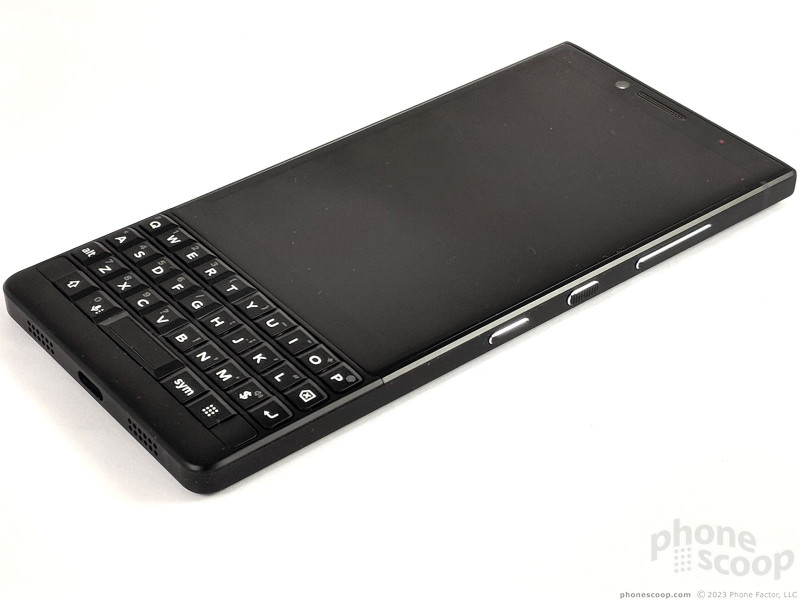










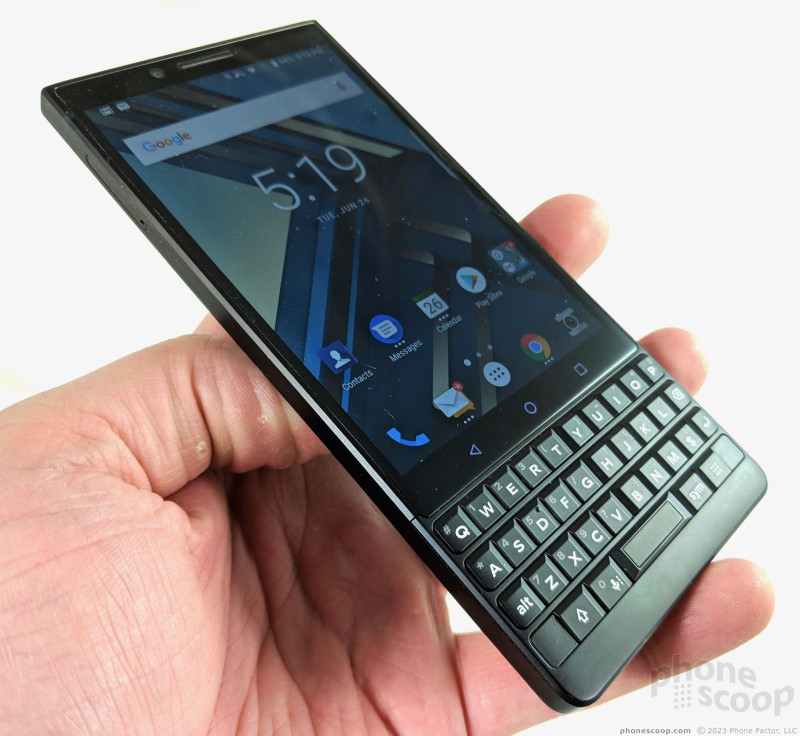









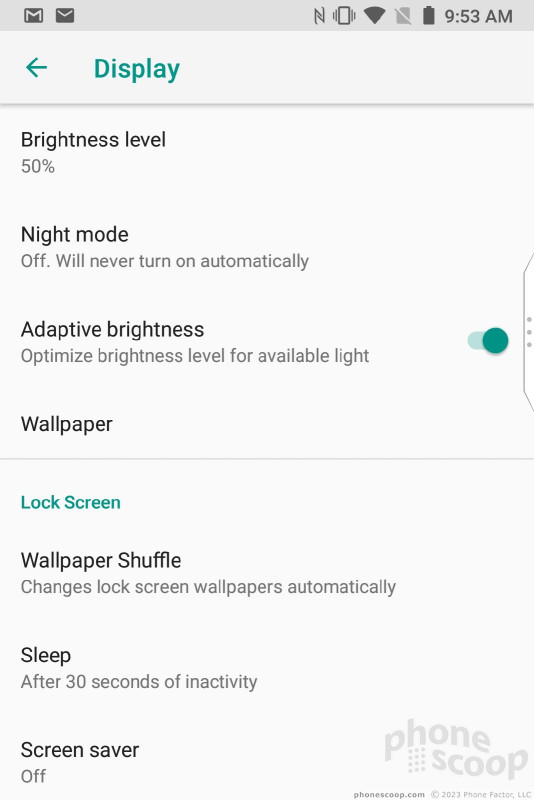





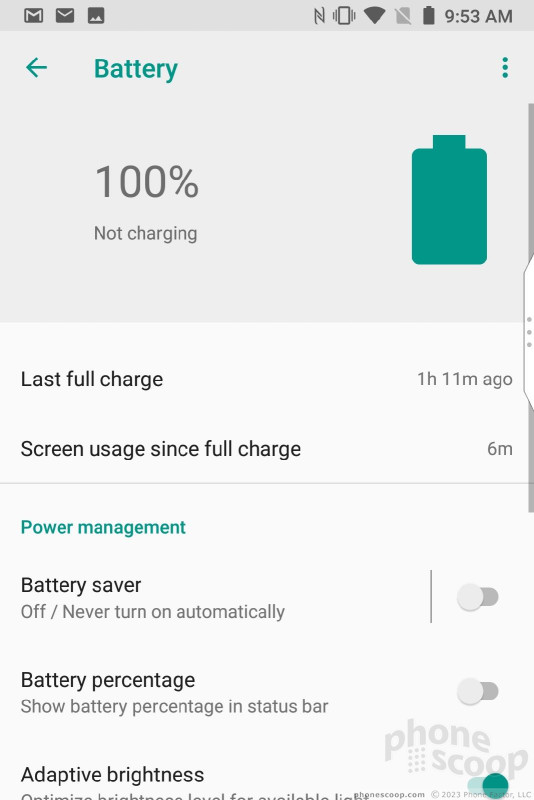



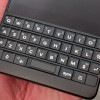 Hands On with the BlackBerry KEY2
Hands On with the BlackBerry KEY2
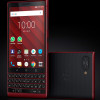 BlackBerry Key2 Now Comes in Red
BlackBerry Key2 Now Comes in Red
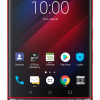 BlackBerry KEY2 LE Sheds Metal Frame, Adds a Splash of Color
BlackBerry KEY2 LE Sheds Metal Frame, Adds a Splash of Color
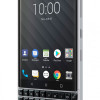 BlackBerry KEY2 Goes On Sale July 13
BlackBerry KEY2 Goes On Sale July 13
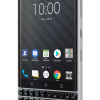 BlackBerry KEY2 Makes All The Right Upgrades
BlackBerry KEY2 Makes All The Right Upgrades
 BlackBerry Key2
BlackBerry Key2


